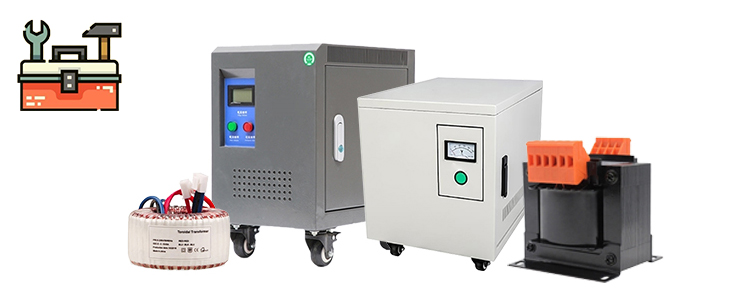Transformer Troubleshooting
Power transformer is the main equipment in the distribution network, and also the main equipment to supply power in industry, agriculture and residential electricity. However, in daily production, there will always be a variety of problems leading to transformer damage or can not be used normally.
In order to reduce the probability of step up and step down transformer failure and improve the reliability of power supply, steptransformer.com will analyze the common failure types and failure causes of distribution transformers in the power system, and put forward corresponding preventive measures to reduce the failure of transformers.

- Temperature anomaly. The cause of this kind of failure is mainly the fault of the transformer winding. During the manufacturing or maintenance of a power transformer, the local insulation is damaged and the remaining defects are left. In operation due to poor heat dissipation or long-term overload, sundries in the winding fall into, so that the temperature is too high.
- Sound anomaly. The core emits a uniform "buzzing" sound due to the electromagnetic force generated by alternating magnetic flux passing through it. When the transformer emits a "crackling" sound, it may be the insulation of the winding or the iron core is broken down, or the live conductor such as the lead wire is too small to discharge from the tank or the iron core.
- Three-phase voltage imbalance. The cause of the three-phase voltage imbalance may be because the staff unreasonable distribution of three-phase load resulting in light load phase voltage increase, heavy load phase voltage decrease, current increase, eventually lead to the transformer turns between short circuit, burnt transformer, especially isolation power transformer.
- High-voltage fuse is blown. One reason for this kind of failure is that with the continuous development of social economy, power consumption increases rapidly, the original step up step down transformer capacity is small, resulting in transformer overload operation. Or seasonal climate causes peak power consumption, so that the transformer overload operation. The resulting high temperature will lead to insulation aging, paper strength reduction, resulting in insulation damage, and then failure.
- Oil leakage. Transformer oil leakage is mainly due to the long-term operation of the transformer, the sealant pad at the connection point aging and cracking, resulting in oil seepage, so that the insulation oil moisture absorption, resulting in the decline of insulation performance. Or because the product quality of the gasket itself is not up to standard, poor welding quality, installation process and installation operation is not standard and equipment structure is unreasonable and manufacturing problems and so on.
